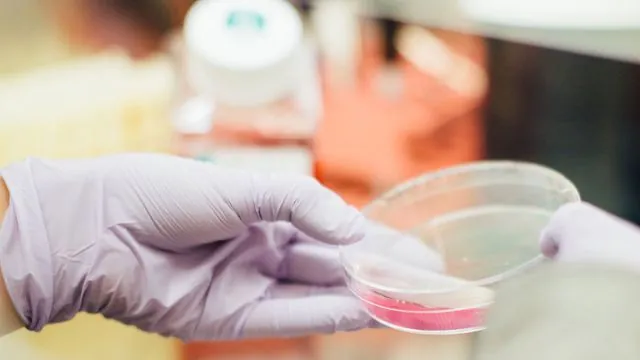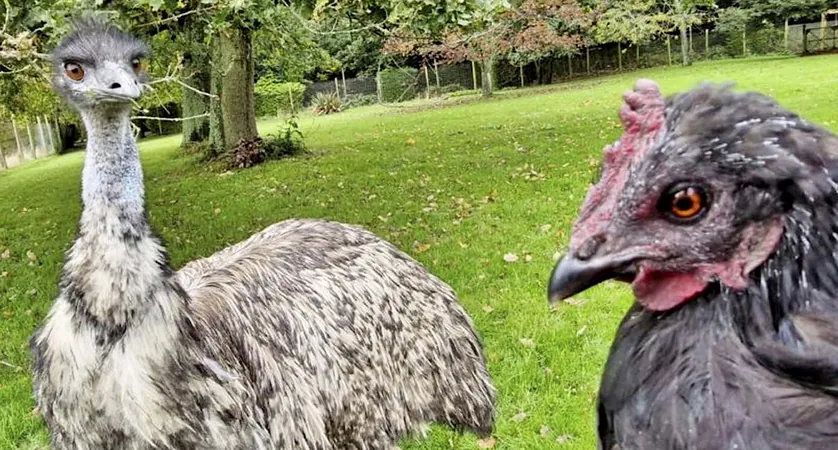
Groundbreaking Method for Creating Viable Eggs from Oocytes Could Transform Reproductive Medicine!
2024-11-11
Author: Siti
Groundbreaking Method for Creating Viable Eggs from Oocytes Could Transform Reproductive Medicine!
In a remarkable breakthrough for reproductive science, a team of researchers at Shinshu University has developed a groundbreaking method to culture viable egg cells, or oocytes, from denuded oocytes that lack the essential protective layer of granulosa cells. This pivotal study could have significant implications not only for human fertility treatments but also for the conservation of endangered species and livestock breeding.
Traditional Methods and New Approach
Mature oocytes are critical in assisted reproductive technologies (ART), which involve removing eggs from the ovaries, fertilizing them outside the body, and implanting the resulting embryos into the uterus. Traditional methods rely on oocytes harvested from antral follicles, which are more developed, but this new approach focuses on the less explored preantral follicles. This previously underutilized pool of oocytes has often been dismissed due to challenges in maturation and viability.
Innovative Study and Methodology
In their innovative study, published in August 2024 in Biology of Reproduction, the researchers isolated both denuded oocytes and granulosa cells from mice, culturing them together in a specialized U-shaped dish for eight days. This interaction led to the creation of granulosa cell-oocyte complexes (GOCs), reviving the crucial relationship between the oocytes and their supporting cells. Notably, low oxygen levels in the culture environment—reduced to 5%—significantly enhanced the development of these GOCs and stimulated the necessary cellular connections for oocyte growth, a crucial discovery for future applications in human ART.
Successful Outcomes and Implications
After eight days of growth, the researchers moved the matured oocytes to a collagen-coated membrane, resulting in successful fertilization. Out of 126 embryos transferred to female mice, six healthy pups were born, marking a significant achievement as the first successful offspring obtained from preantral follicles via this innovative method.
Broader Impact on Fertility and Conservation
This advancement has far-reaching implications. Professor Kanako Morohaku, one of the lead researchers, emphasizes the potential benefits for livestock industries, particularly for cattle and pigs, whose unique ovarian structures often hinder traditional egg maturation processes. Moreover, the ability to create viable oocytes could play a vital role in wildlife conservation efforts, supporting the ex vivo production of eggs from endangered species to help maintain genetic diversity.
The Future of Reproductive Medicine
As researchers continue to explore this promising method, they aim to make a substantial impact on reproductive health for both humans and animals. Their innovative approach to enhancing the viability of denuded oocytes not only offers new hope to those facing infertility but could also pave the way for groundbreaking strategies in farming and species conservation.
With such exciting advancements, the future of reproductive medicine looks brighter than ever! Keep an eye on this transformative research that could reshape our understanding of fertility and genetic preservation across species!


 Brasil (PT)
Brasil (PT)
 Canada (EN)
Canada (EN)
 Chile (ES)
Chile (ES)
 España (ES)
España (ES)
 France (FR)
France (FR)
 Hong Kong (EN)
Hong Kong (EN)
 Italia (IT)
Italia (IT)
 日本 (JA)
日本 (JA)
 Magyarország (HU)
Magyarország (HU)
 Norge (NO)
Norge (NO)
 Polska (PL)
Polska (PL)
 Schweiz (DE)
Schweiz (DE)
 Singapore (EN)
Singapore (EN)
 Sverige (SV)
Sverige (SV)
 Suomi (FI)
Suomi (FI)
 Türkiye (TR)
Türkiye (TR)